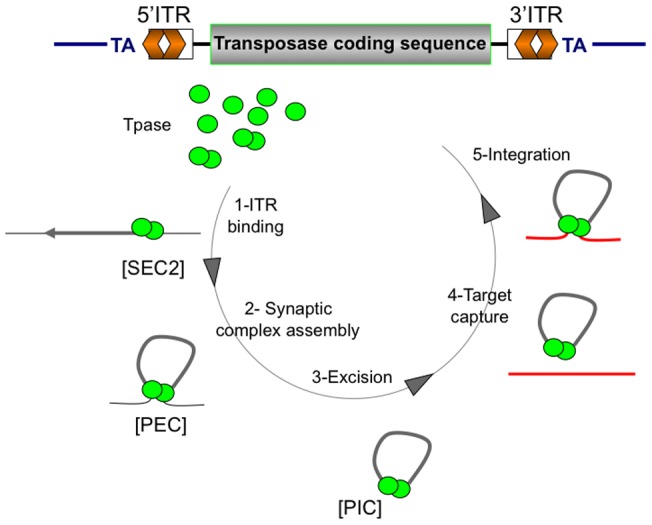Figure 1. Mariner transposition cycle.

A representative mariner element is depicted at the top of the figure, with its main components, i.e. the transposase coding sequence (in grey), the inverted terminal repeats (5′ITR and 3′ITR, in orange), and the TA dinucleotide flanking the element (landmark for transposition). According to published data [7] [18], Mos1 transposition consists of five main steps: (1) dimerization of MOS1 proteins, the Mos1 transposase (green circle) for subsequent ITR binding, thus forming SEC2 (Single-end complex 2). (2) Synaptic complex assembly is obtained by the addition of the second ITR to SEC2, thus forming the PEC (Paired-end complex). (3) DNA strands are then cleaved by the transposase, promoting the excision. Once the PIC (Pre-integration complex) has been produced, the capture of the target DNA occurs (4), followed by the integration of the element into a TA target dinucleotide (5). The results presented in this study argue for generalized this model to all mariner elements.
